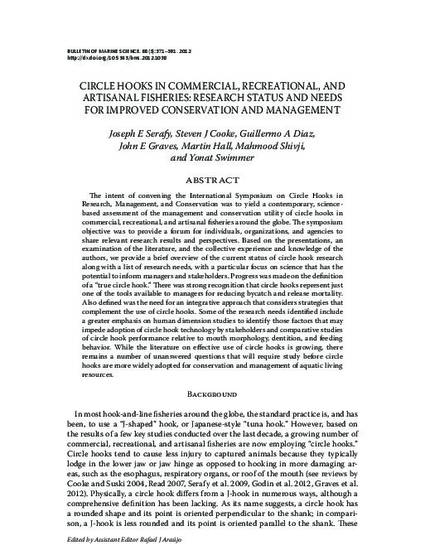
The intent of convening the International Symposium on Circle Hooks in Research, Management, and Conservation was to yield a contemporary, science-based assessment of the management and conservation utility of circle hooks in commercial, recreational, and artisanal fisheries around the globe. The symposium objective was to provide a forum for individuals, organizations, and agencies to share relevant research results and perspectives. Based on the presentations, an examination of the literature, and the collective experience and knowledge of the authors, we provide a brief overview of the current status of circle hook research along with a list of research needs, with a particular focus on science that has the potential to inform managers and stakeholders. Progress was made on the definition of a “true circle hook.” There was strong recognition that circle hooks represent just one of the tools available to managers for reducing bycatch and release mortality. Also defined was the need for an integrative approach that considers strategies that complement the use of circle hooks. Some of the research needs identified include a greater emphasis on human dimension studies to identify those factors that may impede adoption of circle hook technology by stakeholders and comparative studies of circle hook performance relative to mouth morphology, dentition, and feeding behavior. While the literature on effective use of circle hooks is growing, there remains a number of unanswered questions that will require study before circle hooks are more widely adopted for conservation and management of aquatic living resources.
Available at: http://works.bepress.com/mahmood-shivji/23/

©2012 Rosenstiel School of Marine & Atmospheric Science of the University of Miami